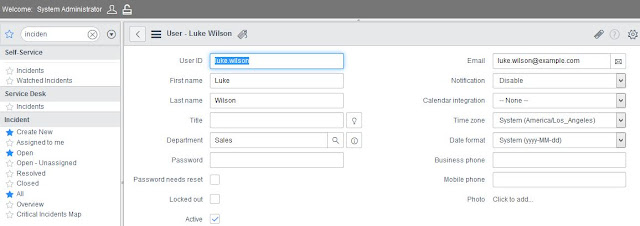Testing ServiceNow integration interfaces with SOAP UI tool
Service Now Integration Interfaces :
ServiceNow is a Database driven application. Every peace of data and Configurations within the applications are resides inside database.This data and Configurations are often displayed form of modules,options and forms. Every form in the system is essentially a database table.
In Service Now we reference any table by using standard URL format, and to directly access any table or form with in the Service Now instance, simply type the database table name in the URL and Append .do extension to that table name.
Example: Incidents
URL: https://dev12552.service-now.com/incident.do
party applications access the data resides within the table.
automatically accessible to these interfaces.
operations.
CREAD:
C ==> Create
R ==> Read
E ==> Edit
D ==> Delete
All of this interfaces are protected with basic authentication by default
Proof of Concepts Using SOAP UI:
"Soap UI is an open source web service testing application for service-oriented architectures (SOA). Its functionality covers web service inspection, invoking, development, simulation and mocking, functional testing, load and compliance testing."
We can use SOAP web service interface(SOAP UI) tool, If we want to explore Web Services functions available.
==> Installation of SOAP UI tool:
1. Download SOAP UI tool from here www.soapui.org
2. Install the downloaded file and Open the tool
==> Create Project a Project in SOAP UI:
1. Open SoapUI
2. Click File > New SOAP Project
3. Project Name: IncidentInterface
2. Click File > New SOAP Project
3. Project Name: IncidentInterface
4. Add WSDL URL: https://.service-now.com/incident.do?WSDL
5. Click OK to finish
==> Authentication
Alternatively users can also set authentication using Auth option available in bottom of tool
Example 1: Insert new incident
1. Double click the insert operation
2. Update the XML file as needed
Sample XML:
-------------------------------------------------------------------------------------------------------------------------
3. Select the green arrow to submit the soap request
4. You will receive a soap response that the the incident was created. Example response below
-------------------------------------------------------------------------------------------------------------------------
--------------------------------------------------------------------------------------------------------------------------
Example 2: Update an existing incident
We need to pass sys_id value of the incident record in XML request for updating an existing incident
Example 3: Delete an Incident
We need to pass sys_id value of the incident record in XML request for deleting an existing incident
========================================================================
Category: ITSM, ServiceNow, snow



















0 comments